The process of 2018 Chicago Marathon was a memorable experience on many fronts. It was my first time following a well-written training plan, sticking with a nutrition regimen, finding semblance of work-life balance and at the end of about 20 weeks later … running start-to-finish on race day to earn a 26-minute PR. As in most such experiments where the arrow of time flows purely in one direction, there wasn’t an opportunity for do overs. But a post-partum analysis revealed a list of things I should have tried and I could have done better.
- Consistent strength training
- Warm up before and cool down after each run, and active rest on rest days
- Improve running technique and efficiency, and run baggage free
- Minimal (preferably, no) nutrition experimentation on race day
- Post-marathon recovery training plan
2018 Chicago Marathon training in mid May of last year had started off rather slowly. I had run less than 150 miles through the first 4.67 months and it taken another 5-6 weeks before I could run a 10k without huffing, puffing or walking/stopping frequently. The extent of progress during and the result after just 20-week training cycle in spite of many little things I didn’t do correctly or well were noticeable. So, the BIG set of questions before beginning this training cycle was: how much more could I improve if I
- ran consistently throughout winter months,
- made room for I should have tried and I could have done better things,
- continued intermittent fasting, and cut alcohol out and limited intake of sugar as well as processed foods,
- continued pre-habing with help from the Handler – Hill – Ross – Starks – Temple – Vertin healthcare enterprise, and
- coupled my blind faith in the training plan with an understanding of the underlying scientific rationale, thanks to the Durocher – Eles – Larson – Miller – Schwartz – Sharp kinesio-physio-athletic enterprise.
The plan … that was changed and changed again
In the absence of a post-marathon recovery training plan (I didn’t see the need for one back then), my strategy was to start training for the 45th American Birkebeiner (or Birkie) festivities from the very next day. In hindsight, I am glad I let that inexperienced idea go. After some thought, a new plan took its place:
- take a couple weeks of down time after the 2018 Chicago Marathon,
- read a good book (or two) and watch a good documentary (or three), and
- start the 18-week training cycle towards the 2019 Great Bear Chase from early November.
I had found a very good book to read. I had stumbled across a wonderful documentary to watch. I had even signed up for the Whitefish Point Marathon in June to keep my winter running efforts honest. Great Bear Chase training was to begin shortly. I had invested in Salomon SpeedSpike CS to have confident footing during winter runs. Getting out of the door was often the hardest part and once I got moving, the miles went by with ease. I was set for 2018-19 Winter. Or so I thought!
I believe I had one-click purchased this book by following iTunes’ suggestion after completing some other one. Though the title/sub-title combo – Let Your Mind Run – got all my attention, I didn’t know Deena Kastor even existed … let alone who she was or what she had accomplished. But I started once Mike Young suggested I should read it and it had a flow. So much so that I found it difficult to put down and read it twice. I have read it a few more times since then and Deena was more than kind enough to even sign my copy! In the process of reading this lovely book, I learned much about Deena, the re-birth of the American distance running program, behind-the-scenes lives of elite athletes and coaches and bite-sized chunks of usable of information that could potentially improve me as a runner, student and teacher.
The documentary I stumbled across, Run Free, was very well made and produced. It too offered several bite-sized bits of usable information that could make me lighter and faster on trails. Gaining facial recognition for many, if not all, of the characters in Christopher McDougall’s Born To Run, the second and subsequent readings yielded a much better understanding. Going down the research article rabbit hole, these two led me to more books and documentaries. Authors of many of these books (Hal Higdon, Roger Robinson and Craig Virgin so far) too were kind enough to sign my copies!
The new plan
Information gathered from what I read, saw and/or discussed had changed the course of things by mid-December: I no longer planned wished to race any ski events during 2018-19 winter. My intent, instead, was to focus on running and get better at it. The Whitefish Point Marathon in June would be the first of two racing days of 2019 and I’d use
- Hal Higdon‘s Advanced 2 Plan to train for the Whitefish Point Marathon. This choice came from believing in John Farquhar‘s claim that I had been good enough to use Advanced 1 Plan for 2018 Chicago. The modifications I made were
- to swap Saturday-Sunday workouts each week,
- to add sufficient warm-up and cool-down for tempo runs, race pace runs and speed work, and
- from prior notes and experiences, to train the full distance a handful of times and go beyond at least once.
- the first 4 weeks of Advanced 2 Plan as Pre-Training (or prep work) to be karmically faithful to the 2019 Spring semester students of my UN5390: Scientific Computing course.
- cross-country skiing or biking to either complement or as substitute for running whenever the conditions permitted.
- Grandma’s Marathon in Duluth, MN, as a backup couple weeks afterwards.
- the first 4 weeks of Hal’s Advanced Post-Marathon Recovery Plan before starting the next training cycle for the second racing day of 2019 in October.
no images were found
Two Paradise runners were discussing the possibility of having a running event in Paradise, MI. Rob Koleski and Rob Klein were neighbors at the time. Rob Koleski was working at the the Great Lakes Shipwreck Museum and approached Director, Bruce Lynn, with the idea of that organization hosting a running race. The result was that the Run for the Light 5K was first held in 2011. A few years later, the 10K was added. A half marathon was also a part of the event for several years.Rob Klein was interested in having a marathon in Paradise and approached the Paradise Area Chamber of Commerce (PACC) with the idea. With the PACC as the sponsoring entity, the Whitefish Point Marathon was first held in 2013. Rob Klein measured a course which began at Sawmill Creek Park, went out to Whitefish Point and back and finished at the Whitefish Township Community Center. The distance was not certified for the first year. Rob Klein then obtained a Jones Counter from Bill Sved of Marquette and measured and had the course certified for 2014 (MI130825SH). Rob Klein was race director for years 2013-15.
Bill Sved was approached to be race director and has been race director since the 2016 edition. He measured a new course with the start at the Whitefish Township Emergency Services building across the road from the finish at the Whitefish Township Community Center and was certified (MI16059MN) for 2017. In 2016, age group awards were added with first in 10 year age groups and mugs with for those posting BQ times. Door prizes for runners were also added. In 2017 pasties were added to the post-race refreshments and first time marathon finisher medals were added. Volunteer door prizes were also added that year. In 2018, second place age groups were added.
Pre-Training
In line with the BIG set of questions, I managed to run about 300 miles after the 2018 Chicago Marathon until the New Year’s eve in addition to some cross-country skiing and very minimal indoor biking. Though I didn’t meet the planned total distance, the pre-training period helped me learn that I could push the mileage for a given activity within reason. It also taught me that I could use skiing (or even indoor biking; especially when the weather conditions weren’t safe or conducive for running) to prevent unnecessary injuries. Additionally, Jan Haase had convinced me that if I skied correctly, the fitness would transfer over to running with ease (Joan Benoit Samuelson re-iterated the same thing in her post-Boston Marathon press conference)… giving me a reason to improve my skiing form and fitness.
|
Notation:
Easy (E) |
Hill (H) |
Long (L) |
Race (R) |
Speed (S) |
Tempo (T) |
XTrain (X)
Distance in miles and time in h:mm:ss |
|||||||||
| Wk |
Mon |
Tue |
Wed |
Thu |
Fri |
Sat |
Sun |
Week | Cycle |
| P1 |
01/07 E 3.00 3.50 1:22:34 |
01/08 H 5.00 - - |
01/09 E 3.00 8.18 2:39:39 |
01/10 T 4.50 3.13 0:38:50 |
01/11 Rest - - |
01/12 L 10.00 9.53 1:31:57 |
01/13 R 5.00 7.45 1:28:27 |
30.50
31.79 7:41:27 |
30.50
31.79 7:41:27 |
|
no images were found I signed up for the Seeley Hills Classic in Cable, WI, in 2018 October hoping it would increase my familiarity with the Birkie Trail system. In turn, I hoped it would improve my Korte time a few weeks down the road. But general lack of snow and more than occasional rain in led to organizers shrinking the Seeley course. The final update, that came at the speed for Oppligers (trust me, it's faster), hinted at hard and fast trails for the event - a no match for my current skill set. In lieu of plastering myself to an off-trail tree or breaking a few bones, I chose to participate in the Heikki Lunta 15 km (thanks to Christine for the distance recommendation) as part of SISU Ski Fest in Ironwood, MI. The weekend turned into a weekend getaway in Wisconsin's Northwoods with the Oppligers (Shawn and Doug) and Greens (Kim and Greg). My newly acquired instant pot made the trip too!After a hearty home-cooked meal and a full night of sleep, Kim and I were dropped off at the ABR Trails. My wave was the last one start and the start was delayed by a few minutes as one of the participants needed medical attention. I fell a few times over the first 3 km but recent lessons in skate skiing helped me stay upright rest of the way until I crossed the finish line. Trail conditions were good and so was volunteer support all along the course. My official time of 1:31:34, albeit 90 some seconds more than my goal, was good enough for 49/102 overall, 35/62 in gender and 4/7 in AG. After another home-cooked hearty dinner, a full night of sleep and yummy breakfast, we all headed back to the Yoop but with a pit stop in Ironwood ... to ski some more in Wolverine Ski Trails. Weather and trail conditions were excellent. Shawn and Kim were kind enough to give up a bit of their time to coach me some more ... to improve my skate skiing! |
|||||||||
| P2 |
01/14 E 3.00 7.35 1:20:52 |
01/15 T 4.50 7.12 1:14:48 |
01/16 E 3.00 9.69 2:38:19 |
01/17 R 3.00 10.96 1:57:06 |
01/18 Rest - - |
01/19 L 11.00 - - |
01/20 E 5.00 16.48 2:45:37 |
29.50
51.60 9:56:42 |
60.00
83.39 17:38:09 |
| P3 |
01/21 E 3.00 6.39 1:02:51 |
01/22 S 6.00 6.36 1:10:44 |
01/23 E 3.00 10.64 2:30:35 |
01/24 T 4.50 - 1:30:00 |
01/25 Rest - 1:30:00 |
01/26 L 8.00 - - |
01/27 R 6.00 - - |
30.50
23.39 7:44:10 |
90.50
106.78 25:22:19 |
|
no images were found Owing to the start of the new semester anxiety and stress, I didn't sleep nearly enough during P02-P03. Neither did I injest enough nutrition into the body to account for the increased effort. In addition, I probably didn't use the appropriate form or technique while using the Yooper Scooper to shovel many inches of snow. All this led to quite a noticeable fatigue, body ache and joint stiffness. Prevailing colder temperatures didn't really help either. Even with an extra day's rest, I found energy levels to lower than usual.I have little problem not starting something but can't stand the thought of not finishing something that I have started ... until I am certain that I've given it my best effort and a bag of chips on top of it. I was pretty proud of warding off any last minute mind over body urges to participate in this ski event that could have potentially derailed the training for the major event in June. The weekend trip to Marquette with Kim and Greg Green and Ben Ciavola and Lianna Miller turned into one of rest and recouperation. Some of this down time was also used to re-assess the extra workout idea, necessary nutrition and rest once the training begins on Monday, 4th February 2019. |
|||||||||
| P4 |
01/28 E 3.00 - - |
01/29 H 5.00 - - |
01/30 E 3.00 - - |
01/31 T 5.00 - 0:45:00 |
02/01 Rest - 2:30:00 |
02/02 L 13.00 6.71 2:04:23 |
02/03 R 6.00 - - |
35.00
6.71 5:19:23 |
125.50
113.49 30:41:42 |
Training
As the following long table indicates, I missed workouts every once in a while. Many that I did miss were of the speed or the tempo or the race pace kind. Partly because the roads were too icy and as such, not so conducive for such workouts without risking bodily injury that could derail the training plan. Partly because I wasn’t very keen on using the 200-meter indoor track at Michigan Tech‘s Student Development Complex for it was too short and too many turns around the corner wouldn’t be kind on knees and ankles (a first world problem, I know).
However, consciously pushing the envelope according to the plan – initially just during the easy runs to test the waters (or snow, in our case) and later extended to LSD runs – helped keep up with the mileage while building the necessary aerobic base (or volume). Replacing the speed and tempo runs with hilly routes while much of our area was under the grip of Winter and focusing on improving breathing, body posture and cadence helped make the legs stronger and ready for when conditions eventually became conducive for such runs. Shoveling snow, sometimes twice a day, provided an at-home strength training activity. Adding warm-up and cool-down/warm-down elements to speed, tempo and race pace runs did its part as well in increasing the mileage. Frequent discussions with the athletic/healthcare think tanks throughout the training cycle helped validate some of the thought experiments, learn from others’ misfortunes and offered corrections whenever I risked going off into La La Land. And studying a handful of exercise physiology research articles and reading even more books provided additional insight.
I did a total of five full length (or longer) LSD workouts during this training period. Might be an overkill according to most plans but they helped remove any distance-related uncertainties for the eventual race day. Three of these five runs were real and organized events away from home helping me iron out travel logistics: Vasaloppet USA, Illinois Marathon and Journeys Marathon. Of the latter two, the primary motive for Illinois Marathon was to experience running on a flat course (similar to what Whitefish Point Marathon offers) and that for Journeys Marathon, with only 57 participants and not much for crowd support along the course, was to learn how to run in a small event and in a 55 F heat wave – where one needs to dig deeper and derive much of the necessary motivation and energy from within (again, a possible scenario in Whitefish Point Marathon). A vast majority of the runs during this training cycle were solo, and those in the in the final four weeks were done wearing extra layers of clothing to mimic/practice warmer tempeartures.
|
Notation:
Easy (E) |
Hill (H) |
Long (L) |
Race (R) |
Speed (S) |
Tempo (T) |
XTrain (X)
Distance in miles and time in h:mm:ss |
|||||||||
| Wk |
Mon |
Tue |
Wed |
Thu |
Fri |
Sat |
Sun |
Week | Cycle |
| 01 |
02/04 E 3.00 3.64 0:45:09 |
02/05 H 5.00 5.30 1:00:48 |
02/06 E 3.00 11.15 2:15:42 |
02/07 T 4.50 10.18 1:11:00 |
02/08 Rest - - |
02/09 L 10.00 26.22 4:27:44 |
02/10 R 5.00 7.76 1:16:34 |
30.50
64.25 10:56:57 |
30.50
64.25 10:56:57 |
|
no images were found If not for friends in high places (or as in this case, the highest of places), there was little chance that I'd even know about this event - let alone be a participant. Alice had not only won the 58 km freestyle edition in 2017 Vasaloppet USA in Mora, MN, but had gone on to be the first US female to complete the 90 km edition in 2018 Vasaloppet in Mora, Sweden. She believed that I was good enough to complete the 42 km Classic and so, I believed in her belief and signed up for the 2019 edition.The longest ski outing of my life yet, 42 km, doubled up as first of the full length training acitivity in this cycle. It took 4:27:07 and was good enough for 160/187 overall, 122/140 in gender and 26/28 in AG. Instead of the recovery run the next day, I participated in a quaint yet very well organized North End Classic in Cable, WI. My time for 12.5 km was was 1:16:30 and good enough for 42/61 overall, 27/38 in gender and 1/2* in AG. If interested, read more about these events in a complete recap here . |
|||||||||
| 02 |
02/11 E 3.00 - 0:45:00 |
02/12 T 4.50 - 0:45:00 |
02/13 E 3.00 9.83 2:23:07 |
02/14 R 3.00 - - |
02/15 Rest - - |
02/16 L 11.00 17.42 3:30:26 |
02/17 E 5.00 16.11 2:56:52 |
29.50
43.36 10:20:25 |
60.00
107.61 21:17:22 |
| 03 |
02/18 E 3.00 - - |
02/19 S 6.00 - - |
02/20 E 3.00 - 1:30:00 |
02/21 T 4.50 - - |
02/22 Rest 17.77 2:36:39 |
02/23 L 8.00 - - |
02/24 E 6.00 1.22 0:18:55 |
30.50
18.99 4:25:34 |
90.50
126.60 25:42:56 |
|
no images were found 140 km base training [for a ~30 km event] seems low ... remarked Jan Haase in the aftermath of 2018 Birkie festivities. Consciously work on your downhills and turns ... suggested Jan Odegard a month or so later in Washington, DC, during the 2018 Spring Meeting of CASC. How much base training would have been sufficient? ... I inquired the encyclopediac minds in and around our community. Deciphering their collective answer, though led me down an entirely new rabbit hole of time-based training, hinted towards a training plan that included some long/long-ish outings. Coupling that with the sneak peak I got into Jessie Diggins' annual training plan, courtesy of The Olympic Coach of the Year, I settled on putting in at least 300 km of base training ahead of the event.Given that I raced in an even that I had deemed as non-racing, I was quite happy with a finish time of 2:35:58 (263/1067 overall, 185/607 in gender, 4/18 in AG, 2/XXX overall in wave #3 and 1/XXX male in wave #3). It was about 57 minutes better than my time in 2018 (3:33:05, 575/885 overall, 361/492 in gender, 14/16 in AG; not sure about the placement within wave #3). I expected to and was confident that I'd finish a few ticks before the 3 hour mark. But to finish nearly 25 minutes ahead of proposed time was the stuff of double secret goals and would have remained just that without help from Mother Nature, groomers, volunteers, ski patrol, friends who taught me things and spectators. If interested, read more about this event in its own complete recap here. |
|||||||||
| 04 |
02/25 E 3.00 - - |
02/26 H 5.00 4.73 2:19:17 |
02/27 E 3.00 4.54 0:47:16 |
02/28 T 5.00 11.97 1:59:22 |
03/01 Rest 5.04 1:48:37 |
03/02 L 13.00 - - |
03/03 R 6.00 4.11 0:54:24 |
35.00
30.39 7:48:56 |
125.50
156.99 33:31:52 |
| 05 |
03/04 E 3.00 - - |
03/05 T 5.00 3.06 0:42:27 |
03/06 E 3.00 4.41 1:18:06 |
03/07 R 3.00 - - |
03/08 Rest - 1:30:00 |
03/09 L 14.00 15.58 2:11:27 |
03/10 E 7.00 7.09 1:10:50 |
35.00
30.14 6:52:50 |
160.50
187.13 40:24:42 |
|
no images were found This too was an event I had deemed I am not going to race but much like Birkie two weekends ago, things changed and changed in a hurry. The last of the officially timed ski event for 2018-19 winter season, being held in our very own backyard in the good company many of my wonderful friends, sufficient knowledge of the course and its terrain gathered over the past 3-4 seasons with help from many said friends - to an extent that I feel at home on every loop and not just when I see the final stretch to the finish line, an opportunity rub shoulders with the elites, and a peroration for Pat Szubielak as he embarks on retirement a second time ... drove the said change.The tracks/trails felt a little slow (especially in shaded areas) but it wasn't anything that any skier would/should complain about. I was fortunate enough to stay behind Makenna Stelpflug (#776) for about 5-7 km and Katie Roberts (#796) for another 3-5 km. Getting an opportunity to mimic their stride and strokes, energy-saving tactics and tehcniques was quite invaluable. The final 5 km proved to be the testing grounds of what I had learned from them on the fly. Plenty of sunshine, blue skies, little to negligible winds and a plethora of cheerful faces turned out to be the icing on the cake! The official finish time of 2:11:27 - though didn't improve my 2020 Birkie wave placement - was good enough for 55/137 overall, 40/96 in gender and 4/8 in AG. If interested, read more about this event in its own complete recap here. |
|||||||||
| 06 |
03/11 E 3.00 6.57 2:05:24 |
03/12 S 7.00 4.05 1:03:21 |
03/13 E 3.00 11.27 1:57:15 |
03/14 T 5.00 3.37 0:30:48 |
03/15 Rest 11.15 3:47:40 |
03/16 L 10.00 11.37 2:22:16 |
03/17 R 7.00 - - |
35.00
47.78 11:46:44 |
195.50
234.91 52:11:26 |
| Wk |
Mon |
Tue |
Wed |
Thu |
Fri |
Sat |
Sun |
Week | Cycle |
| 07 |
03/18 E 3.00 10.27 2:11:29 |
03/19 H 5.50 10.03 1:41:12 |
03/20 E 4.00 12.58 2:38:46 |
03/21 T 5.50 - - |
03/22 Rest - 0:45:00 |
03/23 L 16.00 17.08 3:57:55 |
03/24 R 8.00 - - |
42.00
49.96 11:14:22 |
237.50
284.87 63:25:48 |
| 08 |
03/25 E 3.00 7.08 1:03:04 |
03/26 T 5.50 7.19 1:05:42 |
03/27 E 4.00 20.73 2:35:40 |
03/28 R 3.00 7.20 1:06:55 |
03/29 Rest 10.26 3:48:50 |
03/30 L 17.00 8.04 1:31:09 |
03/31 E 8.00 12.56 1:58:43 |
40.50
73.06 13:10:03 |
278.00
357.93 76:35:51 |
| 09 |
04/01 E 4.00 19.65 3:17:26 |
04/02 S 7.50 7.78 1:17:07 |
04/03 E 4.00 10.40 2:25:48 |
04/04 T 5.50 - - |
04/05 Rest 5.56 2:21:14 |
04/06 L 12.00 16.31 2:38:19 |
04/07 R 9.00 - - |
42.00
59.70 11:59:54 |
320.00
417.63 88:35:45 |
| 10 |
04/08 E 3.00 - - |
04/09 H 6.50 - - |
04/10 E 4.00 15.08 2:25:15 |
04/11 T 6.50 8.56 1:18:00 |
04/12 Rest - 2:00:00 |
04/13 L 19.00 26.31 4:33:05 |
04/14 R 9.00 10.53 1:35:40 |
48.00
60.48 11:52:00 |
368.00
478.11 100:27:45 |
| 11 |
04/15 E 4.00 10.43 1:50:50 |
04/16 T 6.50 10.17 1:36:44 |
04/17 E 5.00 5.01 0:57:38 |
04/18 R 4.00 8.26 1:11:02 |
04/19 Rest - 1:00:00 |
04/20 L 20.00 27.25 4:29:19 |
04/21 E 10.00 7.67 1:10:05 |
49.50
68.79 12:15:38 |
417.50
546.90 112:43:23 |
| 12 |
04/22 E 4.00 4.10 0:42:03 |
04/23 S 8.00 - - |
04/24 E 5.00 5.16 1:21:30 |
04/25 T 6.50 - - |
04/26 Rest 3.11 0:28:15 |
04/27 L 12.00 26.22 3:35:46 |
04/28 R 6.00 6.28 0:56:05 |
41.50
44.87 7:03:39 |
459.00
591.77 119:47:02 |
|
no images were found I first learned about this event some months ago from Patricia Gropp during the Women in HPC networking event as part of the SC18 festivities in Dallas, TX. It resurfaced at a post-dinner conversation with David Moses and John Towns at the Spring 2019 meeing of Coalition for Academic Scientific Computation (CASC) in Alexandria, VA. In addition to using it as yet another long run but with support from the aid stations, my expectations for/from the Illinois Marathon were to treat it as a dress rehearsal (or a tune up event) and practice
I did make my share of the mistakes with regards to timing of travel, easy jog
and nutrition the night before. Their combination made me stop twice along the
course to use the facilities. But getting a chance to meet
Craig Virgin
at the pre-race expo and coming in contact with
Mike Mallon
(pace guide for 3:35) around mile #23 ... and learning seemingly little but
critical aspects of racing that can pay big dividends were very valuable.
Combining these with what
Shawn Oppliger
had tought me during a ski lesson helped me finish stronger. My official finish
time was 3:35:46 - good enough for 255/1089 overall, 209/695 in gender and
27/81 in AG (and a new PR).
|
|||||||||
| Wk |
Mon |
Tue |
Wed |
Thu |
Fri |
Sat |
Sun |
Week | Cycle |
| 13 |
04/29 E 4.00 - - |
04/30 H 7.00 - - |
05/01 E 5.00 5.52 2:21:23 |
05/02 T 7.00 - - |
05/03 Rest 17.06 4:15:48 |
05/04 L 20.00 13.14 2:04:08 |
05/05 R 10.00 11.07 1:50:54 |
53.00
46.79 10:32:13 |
512.00
638.56 130:19:15 |
| 14 |
05/06 E 5.00 5.04 0:55:26 |
05/07 T 6.50 - - |
05/08 E 5.00 3.07 3:03:07 |
05/09 R 5.00 - - |
05/10 Rest 3.25 0:32:02 |
05/11 L 12.00 26.22 4:04:53 |
05/12 E 6.00 6.36 1:12:09 |
39.50
43.94 9:47:37 |
551.50
682.50 140:06:52 |
|
no images were found If I had listened to my friends - Nancy and Josh - the half marathon associated with this event should have been my maiden half marathon when I got into running several years ago. Instead, Eagle River remained an occasional pit stop during adventures deep into the heart of Wisconsin. Apart from treating this as the fifth and final full distance training activity, my expectations for/from the Journeys Marathon were to treat it as a second and final dress rehearsal (or a tune up event) and
I didn't repeat the mistakes of Illinois Marathon but I learned few more
valuable lessons: respecting the terrain and setting appropriate expectations
for pace (or finish times), thinking more clearly when things get seemingly
difficult, training in warmer and humid conditions, and knowing when to shut
off and being ok with it. Traveling to and from the event with
Ray Sharp
and learning more from him was another bonus! My official finish time was
4:04:53 - good enough for 17/51 overall, 9/27 in gender and 4/6 (3*) in AG.
|
|||||||||
| 15 |
05/13 E 5.00 6.31 0:59:53 |
05/14 S 9.00 7.56 1:16:29 |
05/15 E 5.00 5.05 0:46:01 |
05/16 T 5.50 5.89 1:02:03 |
05/17 Rest - 1:30:00 |
05/18 L 20.00 6.26 0:58:30 |
05/19 R 10.00 7.06 1:25:47 |
54.50
38.13 7:58:43 |
606.00
720.63 148:05:35 |
| 16 |
05/20 E 5.00 5.25 1:40:00 |
05/21 H 6.00 8.75 1:49:09 |
05/22 E 5.00 10.05 3:30:08 |
05/23 T 4.50 - - |
05/24 Rest 7.70 1:08:23 |
05/25 L 12.00 10.29 1:55:49 |
05/26 R 4.00 8.81 1:39:49 |
36.50
50.85 11:43:18 |
642.50
771.48 159:48:53 |
| 17 |
05/27 E 4.00 - - |
05/28 T 4.50 4.52 0:37:34 |
05/29 E 4.00 4.22 0:37:48 |
05/30 R 4.00 6.40 0:56:40 |
05/31 Rest 5.22 3:11:02 |
06/01 L 8.00 6.78 3:10:12 |
06/02 E 4.00 - - |
28.50
27.14 8:33:16 |
671.00
798.62 168:22:09 |
| 18 |
06/03 E 3.00 3.11 0:31:01 |
06/04 S 5.00 6.28 0:59:12 |
06/05 Rest 3.41 1:17:38 |
06/06 Rest - - |
06/07 E 3.00 3.25 0:31:20 |
06/08 R 26.22 26.26 3:49:25 |
06/09 Rest - - |
37.22
42.31 7:08:36 |
708.22
840.93 175:30:45 |
Taper Weeks
Having experienced the taper period and its benefits during Chicago Marathon as well as practicing miniature ones leading up to each of the organized events in this training cycle (Vasaloppet USA, American Birkebeiner, Great Bear Chase, Illinois Marathon and Journeys Marathon) made managing the last two weeks relatively easier. Having a plan in place ahead of time to what to do with the extra time that became available as a result of reduced training volume was useful. Fortunately, there weren’t any random aches or pains to worry me and I slept relatively well each night. Moreover, I knew by now that anything unintelligent I tried or did in these two weeks could only wreck last 20 weeks of mostly diligent and committed work. Instead, the free time was used to catch up on various necessities: preparing a packing list and packing things away, discussing travel logistics with dear friend Mariana, working with Garmin to fix a little bug in CSV files missing per-lap calorie information for runs longer than 10 miles, catching up on some coding and some more reading while watching what (and how much) I ate.
Much like during Chicago Marathon training, I wasn’t a saint by any stretch of the imagination. Even after knowing the rationale behind the structure of training plans and knowing their value, a handful of workouts didn’t feel great. But with the benefit of experiences in the last 18-24 months, it was much easier to treat them as bad data points in a long series of measurements. Years of science-ing has finally taught me to not dwell too much on one bad data point and have it (i.e., the unnecessary dwelling) lead to another OR worse, use a bad data point to project/predict the subsequent result.
Between pre-training and training, I traveled to 5 different states, ran and skied 950+ miles and invested a total of 205+ hours. With the veracity and volume of data collected along the way for a variety of activities over the past 22 weeks, one can bludgeon the numbers until the cows come home and end up with a serious case of analysis paralysis. Though much of it is valuable to just yours truly, some of the generally informative eye candies are included below.
Training eye candies
Vitals (sleep, resting heart rate and weight) are/were measured every day shortly after waking up. If a measurement wasn't taken on a given day (say, due to laziness), then the recorded value from the previous day is used for computing the 7-day moving average.
I weighed in about the same as I did in Chicago. But I felt much stronger and a bit smarter in Whitefish Point.
Race Weekend
The workload at work during week #18 was relatively easy to manage. As practiced during the 2019 Journeys Marathon four weekends ago, I completed the last easy jog about 24 hours before the race start time on Friday. Packing had been completed about 12 hours before the last easy jog. After getting a quick bite to eat from 5th and Elm Coffeehouse in Houghton, I started the 250 mile journey to Paradise around 9:30 am on Friday. The drive, though punctuated with stops to stretch legs and one of them to pick up dinner to go at The Pasta Shop in Marquette, was uneventful.
The check-in at the Tahquamenon Suites Lodging around 2:45 pm was a breeze – the place was spotless and all appliances were new (and functioning). It must be under a new and caring management! In light of a 7 am start the next day, I opted to wrap up the dinner formalities around 3:15 pm. That was followed by picking up my race packet in the Whitefish Township Community Center and chatting with the race director. My bib, #493, for the second organized event in a row, wasn’t a prime but the next best thing: a product of two primes. Not that the road infrastructure between Paradise and Whitefish Point would have changed since I last visited in October, I drove the course one more time with Andrew and Mariana stopping to take some photos. All of us took a short walk to The Inn for dinner (a salad and coffee for my dessert) around 7:30 pm, and we called it a night before 9 pm.
May the road rise up to meet you.
May the wind be always at your back.
May the sun shine warm upon your face,
The rains fall soft upon your fields.
And until we meet again,
May God hold you in the palm of His hand.
The morning of race day, as has been the case for about a year now, came after a full night of restful sleep and at a very relaxed pace. I guess the long-term accurate weather forecast – longer than 3 days can be a difficult ask even for the increased supercomputing capacity of NOAA. Presence of a massive waterbody probably only adds a notch or two more of spice to what’s already a very complex system. Though slightly disappointing, it wasn’t a surprise that the 10-day forecast of low of 48, high of 65, 10% chance of precipitation, 11 mph SE and 66% humidity turned into a reality of low of 55, high of 70, no precipitation, average winds of 6 mph SE winds and average humidity of 62%. Mariana and I walked the mile to the start and the abundance of mosquitoes ensured that most of us moved around briskly (or at least waved our limbs in frantic fashion). Standing still for the rendition of The Star Spangled Banner by a fellow participant and oration of the Irish Prayer by the director of Great Lakes Shipwreck Historical Society was … challenging … to say the least.
The horn sounded a few ticks shy of 7:05 am and off we went. Though I expect to train and run like Pheidippides some day soon, I don’t have any plans of dying like him yet. There are far too many bucket list items to be checked off and quite a few double secret goals to accomplish. So, taking the extra few degrees at start (and predicted rise over the next 3-4 hours) into account, I backed off the planned target pace by about 20 seconds per mile. With lessons from Journeys Marathon, I did carry a hat to minimize the effects of heat. Though the heart rate was a bit higher (maybe race day nerves/excitement?), the posture, cadence and breathing were good for the first many miles. It was only after starting to run that I (and I am sure most others as well) noticed the grade … that’s nearly unnoticeable while driving at 35 mph in a car. There were quite a few moments during these first few miles and many more certainly in the back half that I felt the need to have followed through on my original plan of running one of the 20+ milers here a few weeks ago (likely, in lieu of Journeys Marathon).
|
Goal vs Reality
Goal: 26.22 mi in 3:25:00 (7:49 min/mi) Reality: 26.26 mi in 3:49:25.0 (8:44 min/mi) |
|||||||
| Distance mi |
Lap Time m:ss |
Lap Elevation feet |
Total Time h:mm:ss |
Total Elevation feet |
Avg Pace min/mile |
Projected Finish Time h:mm:ss |
Differential Goal Time h:mm:ss |
| 1.00 | 7:42 | 20↑ 20↓ | 0:07:42 | 20↑ 20↓ | 7:42 | 3:21:53 | 0:03:07 |
| 2.00 | 7:31 | 3↑ 20↓ | 0:15:13 | 23↑ 40↓ | 7:36 | 3:19:16 | 0:05:44 |
| 3.00 | 7:38 | 0↑ 10↓ | 0:22:51 | 23↑ 50↓ | 7:37 | 3:19:42 | 0:05:18 |
| 4.00 | 7:38 | 0↑ 10↓ | 0:30:29 | 23↑ 60↓ | 7:37 | 3:19:42 | 0:05:18 |
| 5.00 | 7:46 | 0↑ 7↓ | 0:38:15 | 23↑ 67↓ | 7:39 | 3:20:34 | 0:04:26 |
| 6.00 | 7:55 | 13↑ 0↓ | 0:46:10 | 36↑ 67↓ | 7:41 | 3:21:27 | 0:03:33 |
| 7.00 | 7:42 | 13↑ 7↓ | 0:53:52 | 49↑ 74↓ | 7:41 | 3:21:27 | 0:03:33 |
| 8.00 | 7:51 | 7↑ 26↓ | 1:01:43 | 56↑ 100↓ | 7:42 | 3:21:53 | 0:03:07 |
| 9.00 | 7:40 | 0↑ 0↓ | 1:09:23 | 56↑ 100↓ | 7:42 | 3:21:53 | 0:03:07 |
| 10.00 | 7:43 | 10↑ 10↓ | 1:17:06 | 66↑ 110↓ | 7:42 | 3:21:53 | 0:03:07 |
| 11.00 | 7:47 | 3↑ 7↓ | 1:24:53 | 69↑ 117↓ | 7:42 | 3:21:53 | 0:03:07 |
| 12.00 | 7:54 | 0↑ 7↓ | 1:32:47 | 69↑ 124↓ | 7:43 | 3:22:19 | 0:02:41 |
| 13.00 | 7:52 | 3↑ 3↓ | 1:40:39 | 72↑ 127↓ | 7:44 | 3:22:46 | 0:02:14 |
| 14.00 | 7:30 | 3↑ 7↓ | 1:48:09 | 75↑ 134↓ | 7:43 | 3:22:19 | 0:02:41 |
| 15.00 | 7:39 | 7↑ 0↓ | 1:55:48 | 82↑ 134↓ | 7:43 | 3:22:19 | 0:02:41 |
| 16.00 | 7:51 | 0↑ 7↓ | 2:03:39 | 82↑ 141↓ | 7:43 | 3:22:19 | 0:02:41 |
| 17.00 | 8:05 | 3↑ 7↓ | 2:11:44 | 85↑ 148↓ | 7:44 | 3:22:46 | 0:02:14 |
| 18.00 | 8:29 | 10↑ 7↓ | 2:20:13 | 95↑ 155↓ | 7:47 | 3:24:04 | 0:00:56 |
| 19.00 | 9:06 | 3↑ 7↓ | 2:29:19 | 98↑ 162↓ | 7:51 | 3:25:49 | 0:00:49 |
| 20.00 | 10:48 | 10↑ 7↓ | 2:40:07 | 108↑ 169↓ | 8:00 | 3:29:45 | 0:04:45 |
| 21.00 | 11:51 | 7↑ 16↓ | 2:51:58 | 115↑ 185↓ | 8:11 | 3:34:34 | 0:09:34 |
| 22.00 | 13:05 | 20↑ 7↓ | 3:05:03 | 135↑ 192↓ | 8:24 | 3:40:15 | 0:15:15 |
| 23.00 | 9:50 | 3↑ 7↓ | 3:14:53 | 138↑ 199↓ | 8:28 | 3:42:00 | 0:17:00 |
| 24.00 | 10:09 | 3↑ 0↓ | 3:25:02 | 141↑ 199↓ | 8:32 | 3:43:44 | 0:18:44 |
| 25.00 | 11:23 | 3↑ 0↓ | 3:36:25 | 144↑ 199↓ | 8:39 | 3:46:48 | 0:21:48 |
| 26.00 | 10:34 | 16↑ 3↓ | 3:46:59 | 160↑ 202↓ | 8:43 | 3:48:33 | 0:23:33 |
| 26.26 | 2:27 | 7↑ 0↓ | 3:49:26 | 167↑ 202↓ | 8:44 | 3:48:59 | 0:23:59 |
| The final cumulative time, 3:49:26, may not match the official time (3:49:25.0) owing to rounding errors. Starting my watch a few seconds before the start and stopping it a few seconds after crossing the finish line can be an additional reason for this discrepancy. The overall distance, 26.26 mi, may not match the designated (or certified) event distance (26.22 mi) owing to idiosyncrasies associated with GPS data collection OR my inability to take the tangents OR the aforementioned early start/late stop reasons, and in some rare cases, incorrectly measured (or advertised) courses or DNFs. As a result, the cumulative pace and the projected finish time might not match the official values as well. | |||||||
I followed the nutrition (i.e., gel) plan faithfully throughout the course – taking one every 5 miles through the first 15 and then one every 4 miles over the next 8. One of the things I am rather not proud of is letting the clodhopping of a fellow runner, only a stride or two behind me from miles 10 through 15, unsettle me. I tried putting a little surge a few times but a cautious eye on temperature (and the distance yet to go) limited the extent/duration of such surges. I don’t know how experienced this runner was but I am sure I wasn’t much different a few years ago in terms of runner/racing etiquette. I requested him to pass me … just so that I could return to enjoying the quiet atmosphere rest of the way.
Other than that, I did feel good about my effort until that point: I was likely only 3-5 seconds behind from my best time for 13.1 miles, miles were clipping away comfortably at sub 8:00 min/mile pace and I had the finish time of 3:20-ish within reach after 16 (see the final column, projected finish times, in the table below). Even after slowing down slightly over the next two miles – mostly to stop at an aid station, drink plenty water and douse my head with some – 3:25-ish was within reach and it’d have earned me a 10-minute PR.
As I left the much needed comfort of trailish N. Superior Road (the lack of camber provided some reprieve to my right foot from running all the miles on the same side of Whitefish Point Road until then) to resume road running, another fellow runner came from behind. At first glance, she looked mighty fine maintaining a metronomic cadence. Soon enough, we were running shoulder to shoulder along the narrow shoulder of Whitefish Point Road and our first mile together didn’t warrant any caution. Shortly after we passed her husband and just I was about to pick up my pace towards a possible 3:30-ish finish, I heard a yelp from behind. She was cramping and badly so. If this were a big city event with volunteers/organizers frequently patrolling the course, I likely would have called for their attention to help her. But small town events are different and it was a no brainer to pause my effort to make sure she recovered – at least enough to reach the next aid station. She did and we continued on … learning in the process that she was running her second marathon and aspiring to quality for Boston.
Shortly before the township of Paradise came into our view, she cramped again but recovered quickly after a short walk. Knowing the rules and regulations, I didn’t want anyone not associated with the race (i.e., other than volunteers, fellow runners, race or law enforcement officials; e.g., her husband) to help pace her – for the fear that it could get disqualified from the race and thus nullifying her efforts on a tough day. Having spent way too much time browsing the Boston Athletic Association website, I knew what her qualifying time was (she had mentioned her age in one of our conversations). Working a 5-minute buffer into the consideration, I ensured she breathed well, recovered from one more cramping incident and kept up the pace. Knowing that the timing for this event was a manual effort and wanting to ensure she got the benefit of every extra second towards her qualifying time, I stayed a couple steps behind her as we approached the finish line. Seeing her cross it with nearly 7 minutes to spare (a certainty for 2020 Boston) and seeing her happy through pain was undoubtedly more rewarding than any elation I’d have gained by earning a PR of my own. Far too many people – known and previously unknown – had helped me with far too many things and continue to do so. I was grateful for the opportunity to pay some of it forward.
| Goals (in order of importance) and their status | ||
| 01 | Complete at least 5 full length training workouts (run and ski) | Yes |
| 02 |
Finish below 3:35:46 (minimum: 8:14 min/mile, 7.29 mph) and earn a PR |
No |
| 03 | Finish below 3:14:59 (minimum: 7:26 min/mile, 8.07 mph) | No |
A short while after she had almost fully recovered from her cramps and was able to walk mostly on her own effort, Andrew came and picked me up. The Tahquamenon Suites Lodging folks had been kind enough to grant us a late checkout – thus giving myself and Mariana enough time to shower in spite of our slower than anticipated finish times. The post-race festivities in the Whitefish Township Community Center were fun and festive to say the least.
The return journey started after another drive through of the course – this time around for taking a candid photo of the bib and the award rocks by the Great Lake (my official finish time, 3:49:25, had been good enough for 18/86 overall, 11/45 in gender and 3/8 in AG). I probably should have stopped a few more times along the course to take more photos of roadside attractions … but I was eager to get home. The gripping biography of Walter Payton gave me joyful company on an otherwise solo drive. Barring a few stops – one for food, one for fuel and couple for coffee – it felt easy and was uneventful.
The numbers in Garmin, Strava, etc. indicate today’s effort being a Z3-Z4 effort. It could be a quantifiable indication of backing off the originally intended pace. Maybe, just maybe, it could imply that the next training cycle could begin a bit sooner and on a stronger note. Unlike after the 2018 Chicago Marathon, I have full intentions of actively resting for the next couple weeks. A slightly modified version of Hal Higdon’s Advanced Post-Marathon Recovery Plan is set to serve both as a recovery plan for post-Whitefish Point Marathon and a pre-training period for the next training cycle. There are a handful of things that need some serious work while others that need some tuning.
Thanks be to
the rejections and opportunities life has brought my way, event folks (organizers, sponsors, volunteers, timers, law enforcement officials, photographers, fellow participants and spectators) and my family of good friends, mentors and coaches in and outside of my community for all the unexpected, undeserved and unrewarded acts of kindness and constant encouragement as well as offerings of constructive criticism to improve myself as a human and an athlete. I am eternally grateful to all those who let me train with them, who shared their meals and experiences with me, who helped keep me in good health, who helped me stay the course, and who cheered me on from home or along the course.

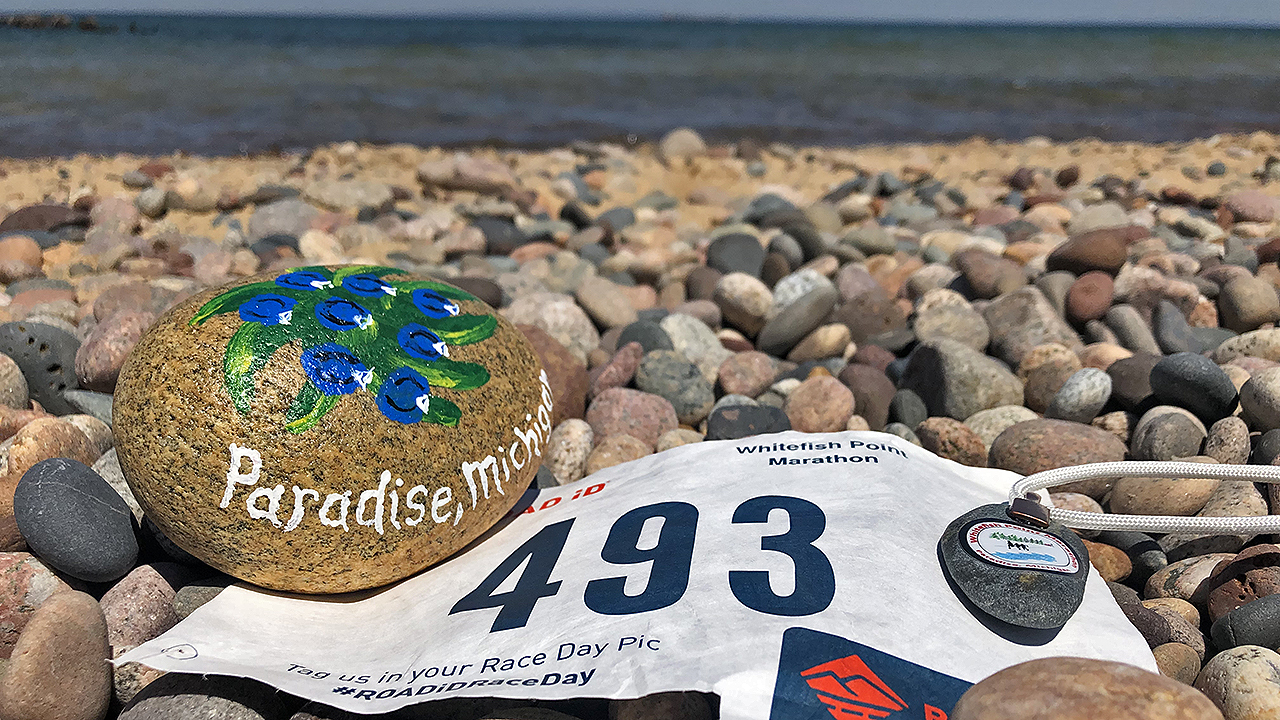
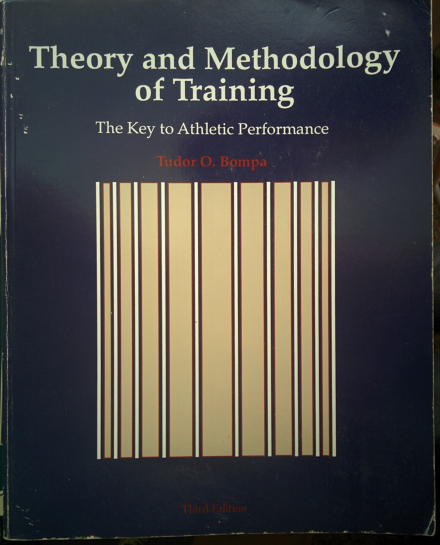

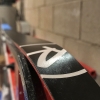

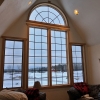
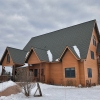


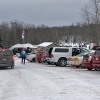
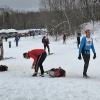
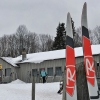
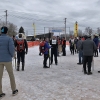

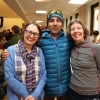
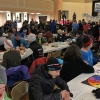
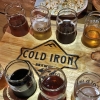


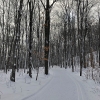


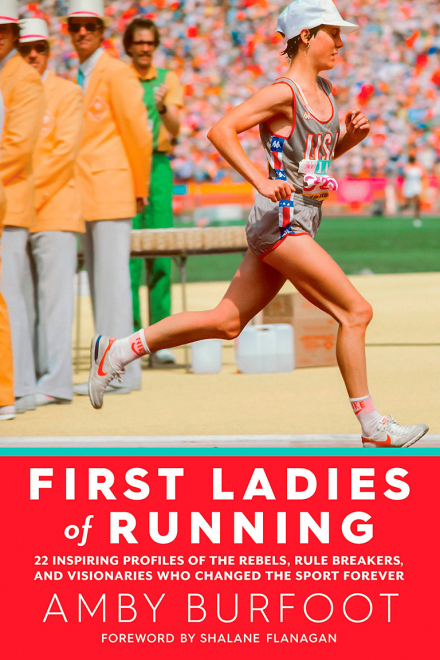
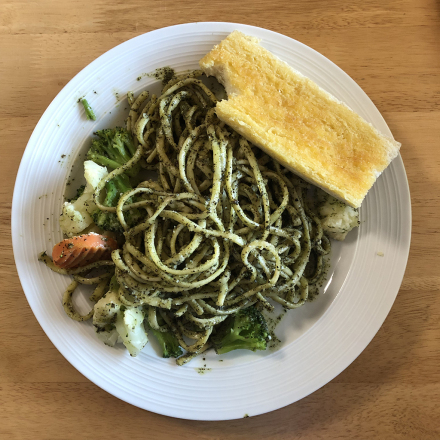
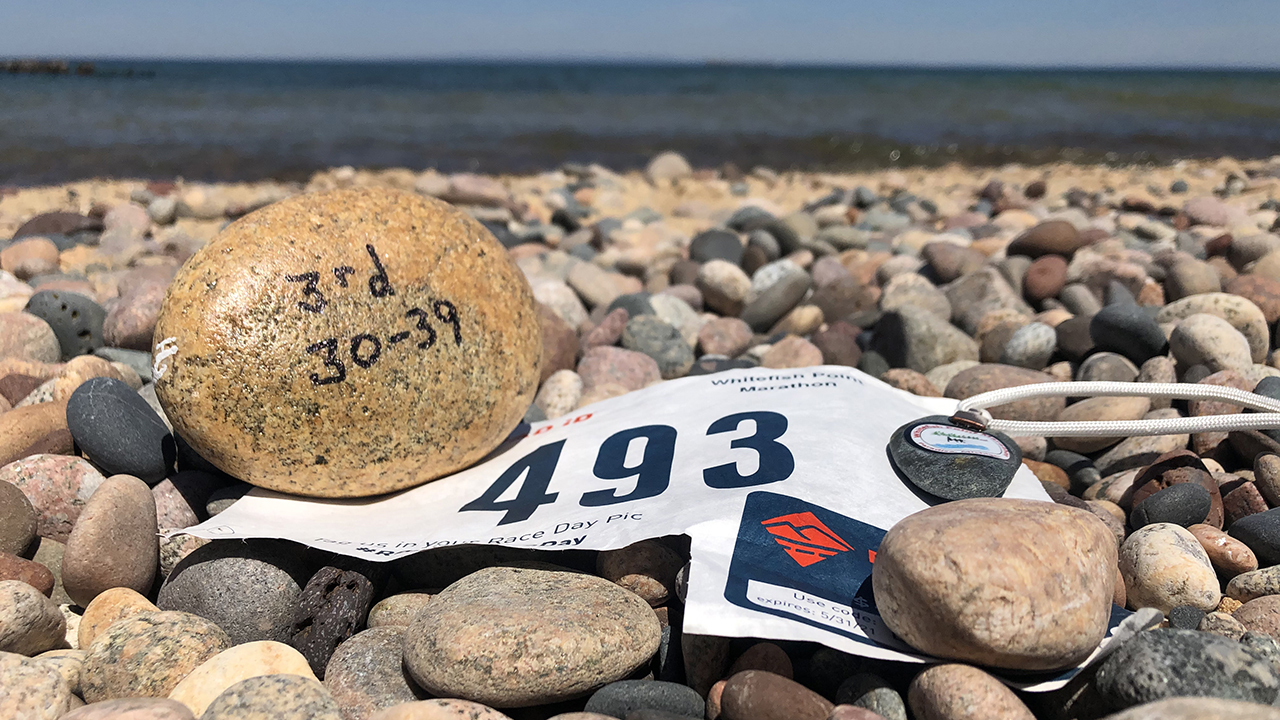
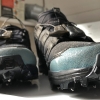
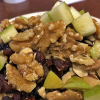
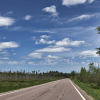




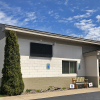

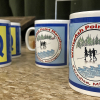
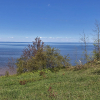
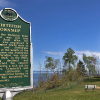
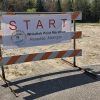
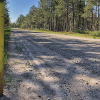
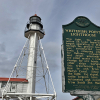
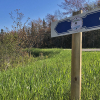
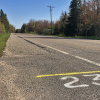
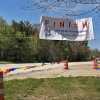
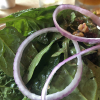
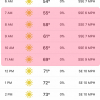
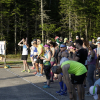
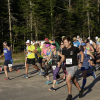
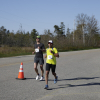
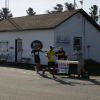

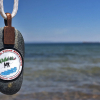
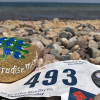
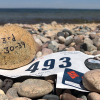
4 Replies to “2019: Whitefish Point Marathon”